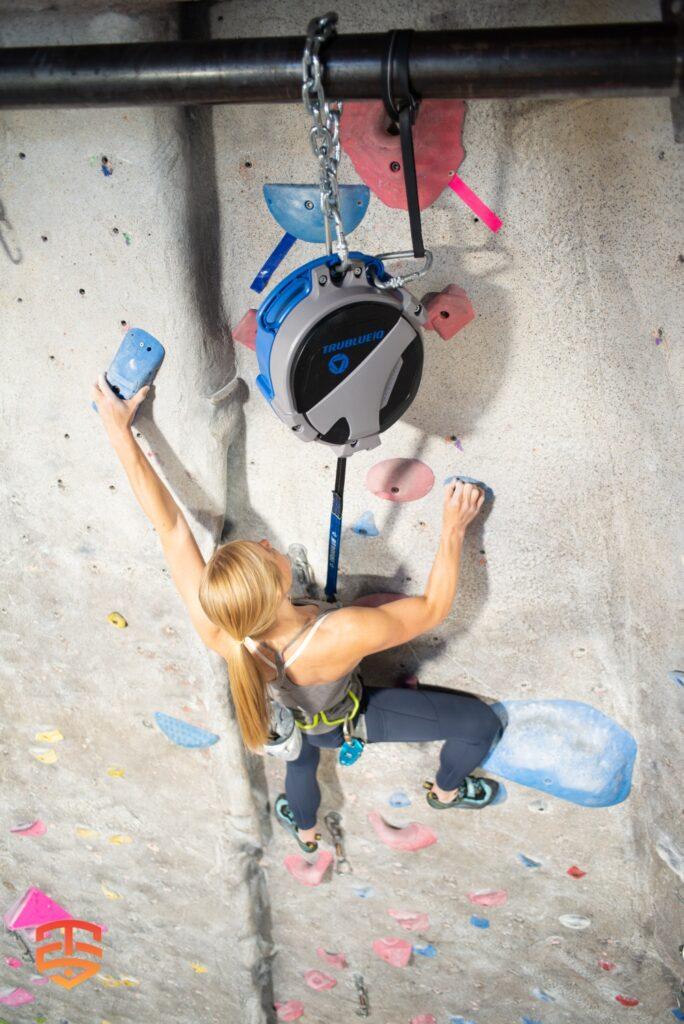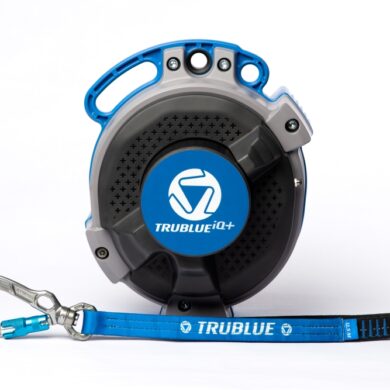
In recent years, the popularity of indoor climbing in particular has soared, creating a significant demand for access to climbing walls at a range of facilities and, in some cases, igniting completely new enterprises. Many climbers have a propensity to associate this expansion with the construction of new climbing gyms, but that is only one aspect of the picture. The expansion of the sport as a whole is being aided by a wide variety of facilities that offer a wide variety of climbing techniques.
People from all walks of life are climbing like never before, whether at a traditional climbing gym, family entertainment center (FEC), camp, recreation center, fun climb, school, or adventure park. Unfortunately, there is frequently not enough supply to satisfy the escalating demand. One location where auto belays can really excel is there.
But before buying, installing, or utilizing an auto belay, it’s crucial to know how they operate, how the technology varies between different models, and what hazards and safety considerations you should be aware of. This is true for everything that people depend on to keep them safe.
How do auto belays work? Why do climbing gyms employ them?
Climbers can use an auto belay system to climb without a partner on routes that would often require a rope in a safe, straightforward, and accessible manner. The ability to climb more regularly, independently, and for longer periods of time are advantages of this form of climbing. In comparison to other, more complex climbing disciplines, auto belays offer newcomers a simple opportunity to attempt climbing out for themselves.
Auto belays are useful equipment from the operator’s perspective for boosting climber throughput during operating hours. Higher throughput enables facilities to serve more clients without having to increase their overall wall space or physical footprint. Auto belays can help streamline the employee training needs in some venues when manpower is scarce while yet providing climbers with a secure and safe environment.
Climbers can attempt more routes faster and without having to wait as long between climbs thanks to higher throughput. This has obvious benefits for seasoned climbers looking to increase their strength and stamina, but it also helps beginners who need a lot of trial and error to start learning the fundamental techniques, who might not have a network of seasoned belay partners, and who may feel awkward interrupting other climbers to request a belay.
Auto belays provide climbers the flexibility to play and experiment with the complete variety of moves that make climbing such a distinctive and thrilling activity, regardless of skill level.
How do different facilities use auto belays differently?
Not just climbing gyms are driving climbing’s appeal to new heights. Other facilities like FECs, fun climbs, and recreation centers are rapidly becoming the initial touchpoint for many climbers’ entrée into the sport as it continues to develop from a specialized adventure activity into a popular one. Access to the climbing walls at many of these sites is frequently wholly reliant on the usage of auto belays.
That is not to imply that auto belaying is not available at more conventional climbing gyms. Many climbers still prefer to use auto belays even in gyms or camps where other climbing techniques like top roping or lead climbing are available for a variety of reasons, including ease of use, the opportunity to learn new skills and practice technique, and the higher level of efficiency when running laps and constructing endurance.
In the quickly developing sport of speed climbing, where competitors race up a predetermined climbing route, auto belays are also crucial. Special speed auto belays are created to take in slack faster than conventional auto belays in order to preserve maximum safety, keeping up with even the world’s fastest climbers.
What role do auto belays play in the climbing world?
Although it has many parallels to other forms of climbing, auto belaying is best viewed as a distinct discipline with its own set of benefits and drawbacks as well as supporters and opponents. Numerous aspects set auto belaying apart from other climbing techniques. The rhythm and tempo of the actions, which must be modified to withstand the full height of the wall while simultaneously removing the climber’s ability to call “Take!” and rest halfway through the climb, are some of these considerations. The mindset that a climber brings to the auto belay area might also be very different from the mindset required for approaching a lead climb or bouldering problem in order to overcome these physical limitations.
Although auto belays are sometimes used in place of ropes to protect climbers at a height, auto belaying is more similar to bouldering than it is to top roping or lead climbing. The most obvious explanation for this is that auto belay climbing doesn’t require a companion, but there are other similarities as well. Auto belays act as a central meeting place for a large group of climbers, much as the perimeter of a bouldering area. Many climbers who use auto belays are equally happy to trade climbs with other like-minded climbers, work the same routes together, and spend their downtime talking about beta for getting through the most difficult sections. Some of these climbers may be drawn to auto belays for a sense of seclusion and independence. Each climber has the freedom to decide whether or not to interact, which may be incredibly empowering, especially for particular personality types.
Sara Aranda is a climber and explorer who wrote The Role of Auto Belays in Self Care:
For myself and other people like me, gyms are inherently daunting due to the crowds, forced integration, and potential judgment. For a community to be built, people must be able to enter a location and find ways to meet their needs. By filling a void in climbing autonomy, auto belays can and have played a significant part in that.
How to choose an auto belay and what to look for
Retraction and braking are the two key operations that every auto belay completes, irrespective of the manufacturer. In other words, the climber retracts as they ascend, and braking is what sends them back down. These two processes take place independently of one another with TRUBLUE Auto Belays, so even if retraction fails, the braking system will still function.
Let’s keep the topic in this post to the more well-liked modular auto belay systems, which are simple to install and transfer to different types of facilities. This does eliminate the older hydraulic method, which is frequently seen at street fairs and carnivals, but if you’re interested, you can read more about that choice in the link below.
Removal of Slack via Auto Belays
A specially created retraction spring is in charge of reducing the slack from the system in modular auto belay systems. These retraction springs are meticulously calibrated to eliminate any slack from the webbing line while not pushing lighter climbers up the wall. They are designed for heavy use. To provide consumers a genuine climbing experience, unassisted ascending is necessary. When we first developed the TRUBLUE Auto, this was one of the fundamental realizations.
How Auto Belays Return Climbers to Ground Level
The auto belay braking system is what distinguishes one auto belay manufacturer from another, even though they all alter the tension of their retraction springs to slightly (but noticeably) different specifications. The great majority of contemporary auto belays use one of two main braking techniques:
- Braking by friction
- Braking with magnets
Brake pads are used in friction braking to decrease a climber’s descent. The majority of auto belay manufacturers still employ this methodology today as it was employed in the first modular auto belay devices. The fact that brake pads are lightweight and simple to understand is a benefit.
Magnetic braking, which uses a contactless technique known as eddy current braking to provide a constant rate of descent regardless of the user’s size or weight, is an alternative to friction braking. How does it function? In essence, the force of the eddy current opposes the magnetic field within the apparatus as a climber descends, creating a damping effect, as shown in the video below.
Eddy current braking is also used in high-speed trains, roller coasters, and elevators in the commercial sector. TRUBLUE is the only auto belay in the industry to make use of eddy current braking. Our innovative system offers users an additional layer of security and operates separately from the retraction system.
Auto belays: How safe are they?
Auto belays must adhere to stringent safety standards because they belong within the category of personal protective equipment (PPE), which are established and evaluated by independent regulatory organizations like TÜV SÜD. All auto belays must also undergo annual maintenance performed by service facilities that have been approved by the manufacturer to maintain such stringent standards. Additionally, auto belay operators must inspect each device as specified in the operator manual on a daily, monthly, and biannual basis.
Being aware of the dangers of auto belaying
There is risk involved in climbing inherently. Any climbing attempt, whether done outdoors or in a gym, must include risk management. Regardless of the climbing discipline, it is critical to learn and adhere to the correct safety procedures. You wouldn’t jump on a lead route without first learning not to backclip, or top rope with a partner who doesn’t know how to use their brake hand. Auto belaying follows the same reasoning.
It is crucial that individual users are alert and knowledgeable about the potential risks of climbing on auto belay because they frequently do not employ the partner-check system. The most important thing is to always remember to clip in. Even though it might seem clear, the majority of auto belay events are caused by climbers who fail to clip in before beginning their ascent of the wall.
Regardless of prior climbing experience, clipping in should be every auto belay user’s top safety concern. Never, ever, ever forget to clip in.
Contrary to other climbing disciplines, failing to clip onto an auto belay is typically not the result of a technical skill deficit (such as a lack of familiarity with safety knots or incorrect usage of a belay gear such an ATC or GriGri). In fact, due to their increased levels of confidence and comfort in the familiar setting, experienced climbers are more likely to forget to clip in than beginners. Even the most experienced climbers might make blunders because of this confidence’s tendency to breed complacency.
Although auto belays are easy to use, they come with some inherent risks, just like any climbing sport, so users must always be mindful of their surroundings.
In line with the study
According to a study conducted jointly by the Climbing Wall Association (CWA) and Jon Heshka, a professor in Thompson Rivers University’s Adventure Studies Department and Law School, there is a significant discrepancy between the safety measures that indoor climbers (even seasoned indoor climbers) believe they are taking and the measures that are actually taken.
“While the initial mistake is the primary contributor to events, climbers and their partners would greatly reduce the likelihood of mishaps by double-checking clip-ins, tie-ins, and belay devices.” — Association for Climbing Walls
The disparity between assumed safety protocols and actual safety observations was attributed primarily to complacency. The failure to double-check safety knots while climbing with a partner and climbers on auto belay neglecting to double-check their connection to the carabiner were all examples of this. It also applied to the lack of communication seen between belay partners. In the study, 82.9% of climbers strongly agreed that before climbing, they should check to make sure they are securely fastened to the auto belay link. In reality, though, just 10% of climbers verified their link twice.
The CWA post makes a number of recommendations to gym owners in order to decrease climber complacency and raise safety. The main lessons learned include educating climbers through the use of orientations and signage, minimizing distractions (for more information, read the article), and installing belay gates as a physical barrier that prevents ascending without first clipping on. Let’s look more closely at methods for upsetting climbers’ complacency with a focus on especially boosting auto belay safety.
Methods for reinforcing auto belay safety precautions
Facilities can remind climbers to clip in in a number of different ways. Every one of these tactics connects to the same key idea: upending the sense of complacency.
- Inform Users
The simplest approach is to make all users go through a required auto belay orientation before using the equipment. An orientation not only makes sure climbers are familiar with how to use an auto belay, but it also serves to inform them of the potential risks, enabling them to be more vigilant and proactive in avoiding such risks during practice. - Posting Signs
All auto belay routes should have signage at the bottom, which can serve as a second point of contact for climbers. These signs don’t need to have elaborate messages. In fact, the more straightforward and uncomplicated the better. - Add Belay Gates.
Installing belay gates at the base of the climbing wall is one of the best ways to remind climbers to clip in. The purpose of a belay gate is to physically barricade access to the beginning of a route without first removing the carabiner from the gate. Belay gates should also include pertinent information that emphasizes the value of clipping in prior to climbing.
Our belay gates are built with two sides. The outward-facing sign directs incoming climbers to “Clip In” when the auto belay is not in operation. The belay gate will lay flat on the ground once the climber has begun climbing the wall, acting as a landing zone. Then, to warn other climbers not to position themselves beneath the active climber, the phrase “Climber Above” is displayed.
Extra connector choices
Although most auto belays use carabiners as its webbing connectors, different choices may be used according on the type of facility, the climbing style, and the climbers’ level of experience. For instance, a self-belay system would be a smart choice if the majority of your user base is made up of novice climbers who are young, as might be the case at an FEC or Fun Climb.

Vertical Auto Belay systems
Grow your climbing community by providing more access to more routes for more climbers.
Auto Belay makes climbing simple and approachable, turning first-time users into return customers. TRUBLUE Auto Belays are engineered to minimize maintenance and are built to last. Our patented magnetic braking system, delivers the smoothest user experience, the highest level of reliability, and dramatically reduces device downtime.
Dive Deeper: Exploring Auto Belay Technology with Expert Insights
Auto belays are transforming the world of indoor climbing, offering convenience and safety for climbers of all levels. But how exactly do they work, and what are the key considerations for using them? To learn more about the intricacies of auto belay technology and gain valuable insights from experts in the field, check out our additional resources below…
- Comparison of Auto Belay’s: what’s new in the TRUBLUE iQ series
- Using Technology to Make Your Climbing Gym Accessible and Inclusive
- A Closer Look at the Auto Belay System
- Next Generation Auto Belay – TRUBLUE iQ
- Every modern climbing gym should have these 5 features
- Everything You Need to Know about Buying Auto Belays
- Increase Revenue and Customer Satisfaction at Family Entertainment Centers
- Catch-and-Hold: What is it and how does it work?
- Leading the Way in profitable and safe climbing
- Why Family Entertainment Centers Trust TRUBLUE Auto Belays
- Creating Value for Customers by Using an Auto Belay
- TRUBLUE iQ+ World’s first catch-and-hold auto belay
- Drive Revenue and Customer Satisfaction with Auto Belays
- 7 Ways Magnetic Braking Is Better Than Friction
- No Belayer Necessary: Understanding Auto belays
- Competitive Advantage of an Auto Belay
- ROI at Climbing Walls and Family Entertainment Centers
- Auto-Belay and hands-free climbing challenges
- Why using Auto Belays Boosts your Business
- The Science of Eddy Current Magnetic Braking
-
 TRUBLUE iQ+ | Catch & Hold Auto Belay€ 4.399,00 – € 4.759,00 Ex VAT
TRUBLUE iQ+ | Catch & Hold Auto Belay€ 4.399,00 – € 4.759,00 Ex VAT -
 TRUBLUE SPEED Auto Belay | 7,5 – 16 meter€ 2.799,00 – € 3.059,00 Ex VAT
TRUBLUE SPEED Auto Belay | 7,5 – 16 meter€ 2.799,00 – € 3.059,00 Ex VAT -
 TRUBLUE iQ Auto Belay | 4,5 – 20 meter€ 2.799,00 – € 3.159,00 Ex VAT
TRUBLUE iQ Auto Belay | 4,5 – 20 meter€ 2.799,00 – € 3.159,00 Ex VAT







